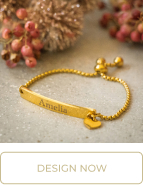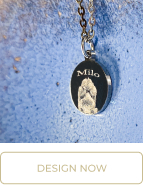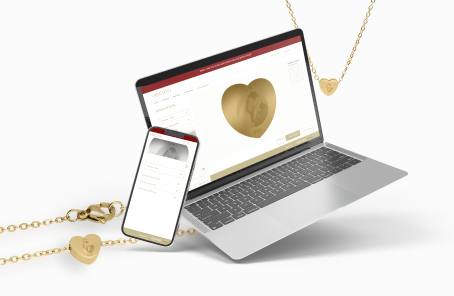Jewelry has always played a significant role in various cultures, not only as an aesthetic accessory but also as a symbol of power, wealth, love, and protection.
Behind many pieces of jewelry, there are fascinating myths and legends that enhance their significance and mystique. In this article, we will explore some of the most well-known jewelry myths and legends and shed light on their cultural and historical backgrounds.
Table of Contents
- The Curse of the Hope Diamond
- The Legend of Cleopatra’s Emeralds
- The Myth of Pearls: Tears of the Gods
- The Power of the Ring of the Nibelungs
- Greek Mythology and Jewelry
- Magical Properties of Gemstones
- Historical Jewels with Mysterious Pasts
- Jewelry in Fairy Tales and Sagas
- Conclusion
- Frequently Asked Questions
The Curse of the Hope Diamond The Hope Diamond is one of the most famous gemstones in the world, not only for its size and beauty but also for the curse allegedly attached to it. According to legend, this deep blue diamond brings misfortune and death to its owners.
From Louis XIV to various owners in the 19th and 20th centuries, many have experienced tragic fates associated with the diamond.
The Legend of Cleopatra’s Emeralds
Cleopatra, the last queen of Egypt, is said to have had a fondness for emeralds. These gemstones were considered symbols of fertility and protection. Legend has it that Cleopatra possessed an exceptionally large and valuable emerald, which she often wore to demonstrate her power and divine status.
After her death, the emerald was lost, and its whereabouts remain a mystery.
The Myth of Pearls: Tears of the Gods
Pearls have been a symbol of purity and femininity for millennia. In many cultures, they were considered tears of the gods. In Greek mythology, for example, pearls are said to be the tears of the goddess Aphrodite.
This mythical significance has led to pearls often being used as wedding gifts to symbolize purity and happiness in marriage.
The Power of the Ring of the Nibelungs
The Ring of the Nibelungs is a central element in Richard Wagner’s opera cycle of the same name. The myth states that the ring grants its wearer immense power but also brings great misfortune.
The ring was forged from the gold of the Rhine and is the most coveted object of gods, dwarves, and heroes in Norse mythology. This story has its roots in the ancient sagas and epics of the Germanic peoples.
Greek Mythology and Jewelry
In Greek mythology, jewelry often plays an important role. The golden apple of Eris, which triggered the Trojan War, or the amulets that protected heroes like Perseus and Theseus are just a few examples.
These mythical jewelry pieces were often associated with divine powers and blessings, significantly increasing their importance and value in the eyes of the ancient Greeks.
Magical Properties of Gemstones
Many cultures believed that gemstones possessed magical properties. Amethysts, for example, were worn to prevent drunkenness, while turquoise was believed to protect against accidents and evil spirits.
These beliefs are often deeply rooted in the myths and legends of the respective cultures and have given the gemstones additional meaning.
Historical Jewels with Mysterious Pasts
Some of the most famous historical jewels have a mysterious and often dark past. The Koh-i-Noor diamond, now part of the British Crown Jewels, is said to be cursed, stating that it can only be worn by a woman without causing great misfortune.
Such stories contribute to the mystique and fascination of these jewels and make them sought-after collector’s items and museum exhibits.
Jewelry in Fairy Tales and Sagas
Fairy tales and sagas are full of jewelry with special powers and meanings. Cinderella’s glass slipper, Snow White’s poisoned comb, or the enchanted ring in “The Lord of the Rings” are just a few examples.
These stories often have a moral or instructive component and use jewelry as central symbols for the plot.
Conclusion
Jewelry myths and legends are a fascinating part of our cultural history. They give jewelry a deeper meaning and a mystical aura that goes beyond its material value.
These stories remind us that jewelry is not only beautiful to look at but also carries stories of power, love, misfortune, and protection.
Engrave your own Jewelry
Thanks to your creativity and Vecieri’s jewelry configurator, you can create personalized jewelry just as special as you.
Here’s how to turn your favorite design into a lasting memory:
- Find Your Perfect Piece: Browse our collection and choose the necklace or bracelet that best suits his style.
- Pick Your Design: Choose among all the design options. It can be a picture, a message, or anything you’d like!!
- We Do the Magic: Our whiz-bang tech transforms your design into a high-quality engraving. No need to worry about fancy editing skills, we’ve got it covered.
- See It Before You Get It: Before we engrave your masterpiece, you’ll get a preview to make sure everything looks perfect.
Every set of engraved jewelry tells a unique story, a personal narrative close to the wearer’s heart.






Frequently Asked Questions
- Why is the Hope Diamond considered cursed? The Hope Diamond is associated with misfortune and death for its various owners, leading to the belief in a curse.
- What significance did emeralds have for Cleopatra? Cleopatra valued emeralds as symbols of fertility and power, often wearing them to emphasize her divine status.
- What do pearls symbolize in mythology? Pearls are often seen as tears of the gods, representing purity and innocence.
- What is the Ring of the Nibelungs? The Ring of the Nibelungs is a mythical ring in Norse mythology that grants immense power but brings misfortune to its owner.
- What role does jewelry play in Greek mythology? Jewelry often represented divine power, protection, and status in Greek mythology.
- What magical properties are attributed to gemstones? Different gemstones were believed to possess various powers, such as protection, healing, or love.
- What is the story of the Koh-i-Noor diamond? The Koh-i-Noor diamond is associated with a curse and has been part of various royal collections.
- What role does jewelry play in fairy tales and sagas? Jewelry often serves as magical objects or symbols of status and power in fairy tales and sagas.
- Are there real examples of cursed jewels? While difficult to prove, the Hope Diamond and the Koh-i-Noor diamond are often cited as examples of allegedly cursed jewels.
- Why are jewelry myths and legends important? They add depth and cultural significance to jewelry, connecting us to historical and mythological narratives.
- How have jewelry myths influenced culture? Jewelry myths have shaped perceptions of gemstones, influenced fashion trends, and contributed to the overall symbolism of jewelry.
- What role does jewelry play in Norse mythology? In Norse mythology, jewelry, particularly the Ring of the Nibelungs, symbolizes power, wealth, and the potential for great misfortune.
- What are some famous pieces of jewelry from mythology? The Hope Diamond, Cleopatra’s emerald, and the Ring of the Nibelungs are among the most famous examples.
- How was jewelry used in ancient times? In ancient times, jewelry served not only as adornment but also as symbols of status, wealth, and religious or spiritual beliefs.
- Which gemstones are most commonly associated with myths? Diamonds, emeralds, pearls, and rubies are frequently featured in mythological stories and legends.

